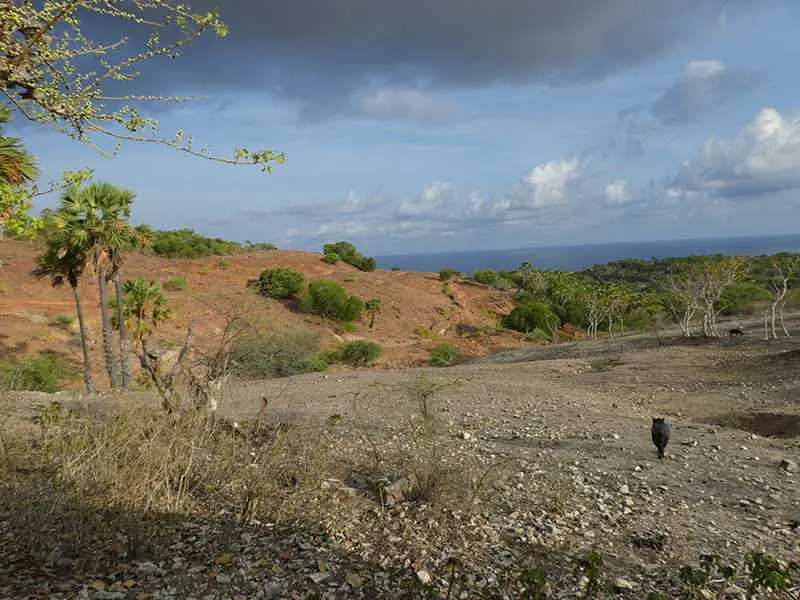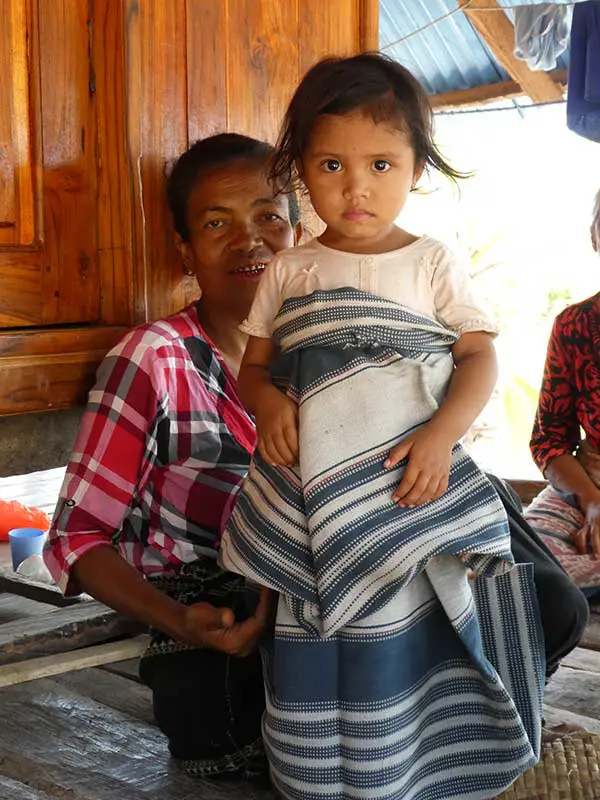Savu Island

Willy Daos Kadati with Threads of Life team in Savu
We are delighted to have Willy Daos Kadati join us again in our work with Threads of Life natural dye traditional weaving groups. Willy worked with us for 6 years and then was at Charles Darwin University in Australia working on a masters degree for 3 years. He came back to Timor as he was “called” to take his place as the traditional leader of his clan in his village of Lansese in Insana. Willy’s deep knowledge of traditions and culture within the eastern islands is invaluable.
I flewfrom Bali to Kupang with our newest field staff Alan, and then we traveled with Willy the next day by boat to Savu. We then traveled by motorbike from the main city of Seba to Mesara on the western side of the island where we met weavers who Threads of Life has worked with over the past ten years.

Seba the only town on Savu

Weavers in Mesara
Anthropologist and Savu specialist Genevieve Duggan has written extensively on Savu with a particular focus on the complex social relationships and lineages within the area of Mesara.
For almost two years Savu has been experiencing a drought. The topsoil is badly eroded as boney cattle roam free, struggling to find anything to eat. People have hardly enough water to use for cooking and drinking, much less bathing. This has clearly also put a strain on their natural dye work as dye plants such as indigo are sparse and what was growing has been devoured by livestock.

Dry landscape in Savu with no rain in two years

Traditional well built by Dutch in Savu
A very successful privately-sponsored water project has been undertaken to address the water needs of dry Mesara within the hamlets of Ledetadu and Pudi. With Genevieve’s years of experience and her deep understanding of the social relationships of this community she was able to guide water specialist, Andre Graff, over the last year to bring water to the homes of many of the families of Ledetadu and Pudi. After the local government failed to come through with support, Genevieve, Andre and all the people in the community who wanted water spent two months together digging a two-kilometer long 70 cm deep trench to lay high quality flexible pipe shipped from Surabaya. Water is pumped with a solar powered pump from an old well made during the time of the Dutch.
It was absolutely wonderful to see a water source at Ina Koroh’s compound that is shared with five other families. “It is incredible to have water right by my home!” exclaimed Ina Koroh. Bravo to Genevieve, Andre and the people of Ledetadu for making this become a sustainable reality!

Single water tank that is fed by central distribution center

A four-year old girl wearing the sarong Ae Leko Wu’e. A boy would wear an all white hip cloth called Hig’I Leko Wu’e
While looking at the water system we had a hot drink of water with lontar palm syrup while we sat for a few hours talking with Ina Koroh and Ina Keba. Ina Keba showed us a textile called an Ae Leko Wu’e that is simple stripes with no motif and is worn by a young girl before she menstruates. She wears this when she first goes to meet her maternal grandmother bringing in the pouch of the textile Arecea catechu nut and piper betel.
The grandmother in return gives the child the important cultural crop – green mung beans – locally known as kebhui (Vigna radiate), along with a piece of grilled coconut. She puts this in the pouch of the textile for the child to return home and eat. This is the first experience for a child in understanding the importance of reciprocity in social relationships.

Mung beans are given to a child in exchange for betelnut offered to the grandmother

This variety of cotton produces a fine silky thread when spun
We traveled to Rai Jua and found that women were weaving many of their textiles from handspun cotton as the economy has dropped considerably with the collapse of the seaweed market, which in the past was worth IDR 22,000 per kilo and is now only IDR 8,000 per kilo. We collected plant specimens of this variety of cotton and hope to have it identified by the Royal Botanic Garden in Kew, London, who Threads of Life has a good working relationship with. When spun, the thread is very fine and silky.
In the past traders came from the island of Andonara to Savu and Rai Jua. A half coconut full of the islands’ famous lontar palm sugar was traded for a half bowl of cotton. This weavers’ husband used to also sail to Adonara for trade.

Beautiful indigo dyed Ae Pudi Wo Datu are now available at Threads of Life

